
Many promises, but few supplies: what weapons did Ukraine receive from allies in 2023 and what to expect next
Despite the considerable amount of military assistance provided to Ukraine in 2023, it was not enough to turn the tide on the battlefield and finally push back Russian troops. However, the next year may change everything
Espreso explains what weapons the allies provided to Ukraine in 2023, why it was not enough, and what military equipment we can expect next year.
The article covers the following:
- What the allies provided to Ukraine in 2023
- "Tank Coalition": high hopes, but low numbers
- IFVs: a lot, but not enough
- Fewer howitzers and self-propelled artillery systems, but new long-range missiles
- Ammunition: over 2.6 million 155-mm artillery shells supplied, need at least as much next year
- The number and quality of air defense systems is growing steadily
- Compared to 2022, the pace of military assistance has significantly decreased
- What weapons to expect next year: F-16s and increased production
What allies provided to Ukraine in 2023
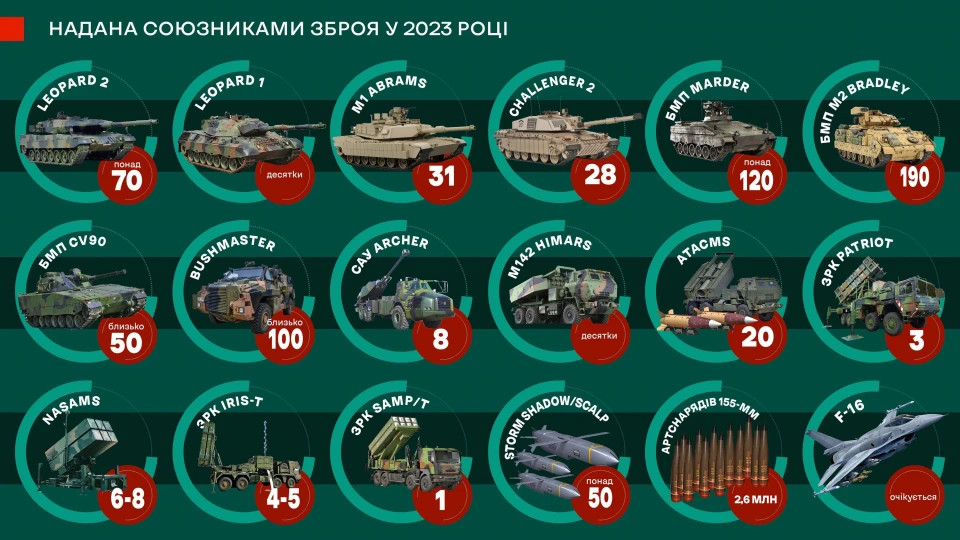
The Ukrainian militaries have been and still are transmitting their requests through two platforms. The first and most effective is through meetings in the Ramstein format (10 such contacts with 50 partner countries took place in 2023) and through intergovernmental relations at the level of the government of Ukraine and partner countries.
A year ago, on New Year's Eve, in an interview with the Economist, Commander-in-Chief of the Ukrainian Armed Forces, Valerii Zaluzhnyi, clearly stated the needs of the Ukrainian Armed Forces for 2023:
"I need 300 tanks, 600-700 IFVs, 500 Howitzers. Then, I think it is completely realistic to get to the lines of February 23rd. We are getting less than we need. We have enough people, and I can clearly see what I have. I have enough. I don’t need hundreds of thousands more. We need tanks, we need APCs, infantry fighting vehicles. And we need ammunition. Please note, I’m not talking about f-16s right now. The Ukrainian Defense Forces have enough soldiers, but Ukraine needs to increase the supply of ammunition, artillery shells, equipment and air defense systems."
In 2022, the allies supplied the Ukrainian Armed Forces with about 4,300 armored vehicles (mostly light) and 750 artillery systems. In 2023, they promised Ukraine over 1,250 more armored vehicles (including tanks) and an unspecified amount of artillery (mostly to repair and replace damaged weapons). Generally speaking, no army in the world has ever had such a military "zoo" of various equipment and weapons. This has led to a lot of nuances.
Despite the substantial amount of military aid on paper, Ukraine has been unable to fully regain its territory up to the borders of February 23. Additionally, beyond weapons, Ukraine requires personnel to rotate and replenish the brigades actively holding back and pushing against Russian troops.
Let's analyze the promises made to Ukraine by its allies in 2023 and evaluate how much support was actually provided. It is important to note that the precise quantity of weapons received can only be confirmed by the General Staff of the Ukrainian Armed Forces. However, many details have been openly disclosed by international partners, while others have been unofficially reported by journalists.
"Tank Coalition": high hopes, but low numbers
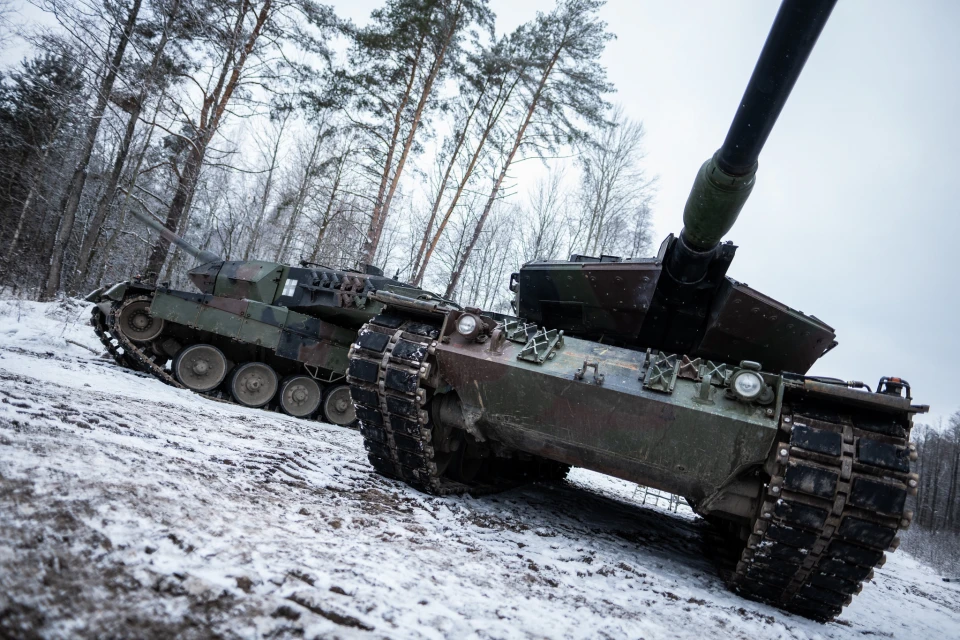
Photo: Ministry of Defense of Ukraine
The year started with encouraging news about the lifting of the NATO veto on providing tanks to Ukraine (previously old Soviet tanks were supplied, with Poland being the first to deliver hundreds of T-72s). In 2022, allies were hesitant, fearing that such a move might “escalate the conflict further,” as it may provoke Russian leader Vladimir Putin. However, after widespread global rallies supporting the unblocking of this decision and significant diplomatic efforts by Ukrainian authorities, allies were convinced, leading to the formation of a "tank coalition."
In July, Bloomberg reported, citing information from the Ukraine Support Tracker database maintained by the Kiel Institute for World Economics, that Ukraine had caught up with Russia in terms of tanks over the almost one and a half years of the conflict. Russia had lost half of its heavy equipment, while Ukraine received a significant replenishment. The tanks included German Leopard 2 (2A4, 2A5, and 2A6), German Leopard 1 (A5), British Challenger 2, and American M1 Abrams. It's noteworthy that many tanks and other military equipment were provided by Russia itself as trophy models. Forbes calculated that in 2022, Russia became the largest supplier of heavy weapons to Ukraine, delivering 400 tanks, 700 armored vehicles, and 170 artillery systems. In 2023, due to the positional phase of the war, there were significantly fewer such "gifts" for the Ukrainian Armed Forces.

Photo: Ministry of Defense of Ukraine
According to the Ukraine Support Tracker, since the beginning of the full-scale invasion and as of the summer of 2023, the allies have delivered about 500 tanks to Ukraine, with another 250 expected to arrive by the end of the year. Potentially, this totals about 750 tanks from the West in almost two years of war. However, the quality of these tanks, like other transferred weapons, leaves much to be desired, as some arrived in non-working condition. The New York Times reported this before the start of the summer Ukrainian counteroffensive, citing data from its own sources. Der Spiegel also reported that Ukraine refused to accept the second batch of Leopard 1s due to badly worn equipment that needed repair. Therefore, Ukraine likely did not receive all the promised tanks, as some are unsuitable for war, especially old Leopard 1s, of which about 200 were promised.
The tank coalition's foundation was German tanks, with 10 countries joining to provide Leopards: Germany, the Netherlands, Denmark, Poland, Spain, Sweden, Norway, Canada, Finland, and Portugal. Ukraine received more than 70 Leopard 2s of various modifications and was supposed to receive 200 Leopard 1s, but technical problems arose, making it difficult to determine the actual number received—likely several dozen. The Americans provided only 31 M1 Abrams tanks from their extensive warehouses (holding thousands of tanks). The British, with around 400 tanks, handed over only 28 Challenger 2s.
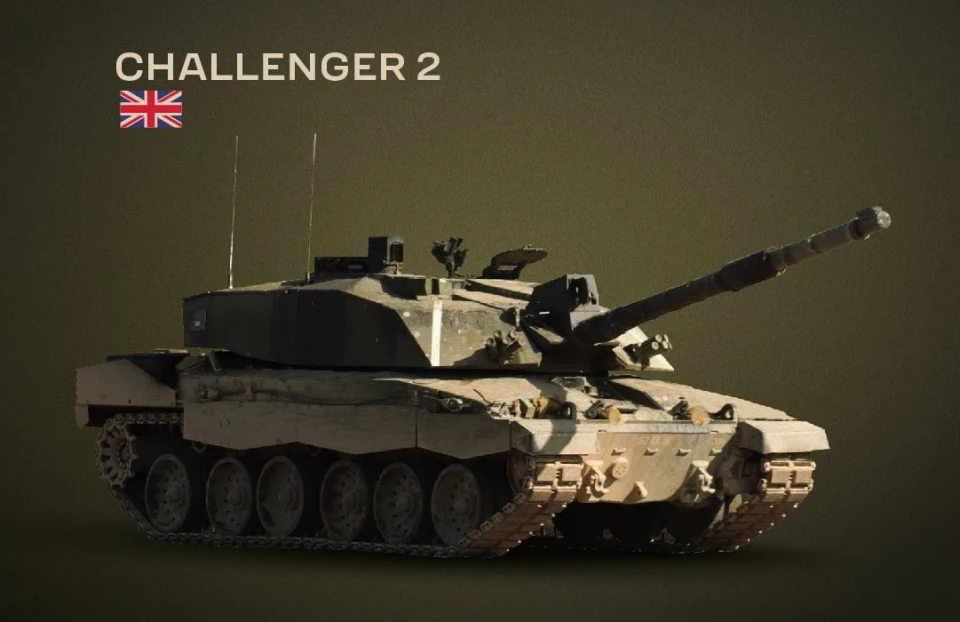
Photo: Ministry of Defense of Ukraine
In reality, the Ukrainian Armed Forces received approximately 150-200 functional tanks, with an additional 100-150 potentially rejected (Leopard 1). Consequently, the West did not fully meet the request of Commander-in-Chief Valerii Zaluzhnyi, and before the summer counteroffensive, the Ukrainian forces did not have 300 new tanks.
IFVs: a lot, but not enough
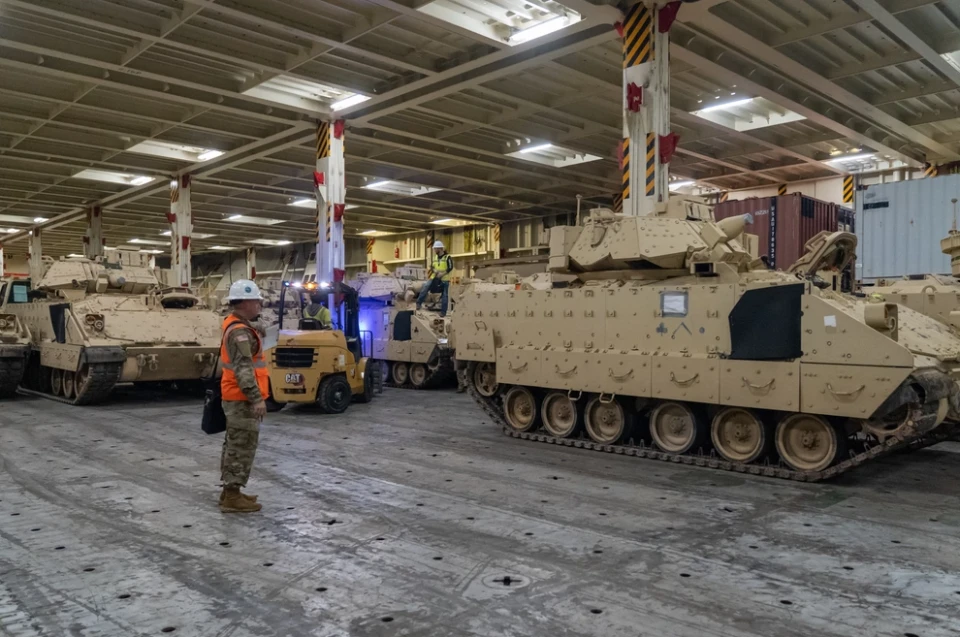
Photo: Oz Suguitan
The majority of infantry fighting vehicles for the Ukrainian Armed Forces were supplied by the United States and Germany. These include the German Marder infantry fighting vehicle and the American M2 Bradley and Stryker.
The Marder infantry fighting vehicle, originally developed for the Bundeswehr in the 1970s and continuously modernized, remains one of the most reliable weapons systems in its class globally. In 2023, the Ukrainian Armed Forces received over 120 Marder vehicles. Additionally, from the United States, Ukraine acquired around 190 M2 Bradley infantry fighting vehicles of various modifications, with approximately 90 Stryker wheeled armored vehicles yet to be delivered. The Ukrainian military also obtained about 50 Swedish CV90 infantry fighting vehicles and a future agreement between Ukraine and Sweden for joint production is expected to bring more of these IFVs to the Ukrainian Armed Forces.
When calculating the numbers, it appears that Ukraine potentially received around 450-500 armored personnel carriers (APCs) from its allies in 2023. However, this falls short of the 700 vehicles that Commander-in-Chief Valerii Zaluzhnyi had initially requested.
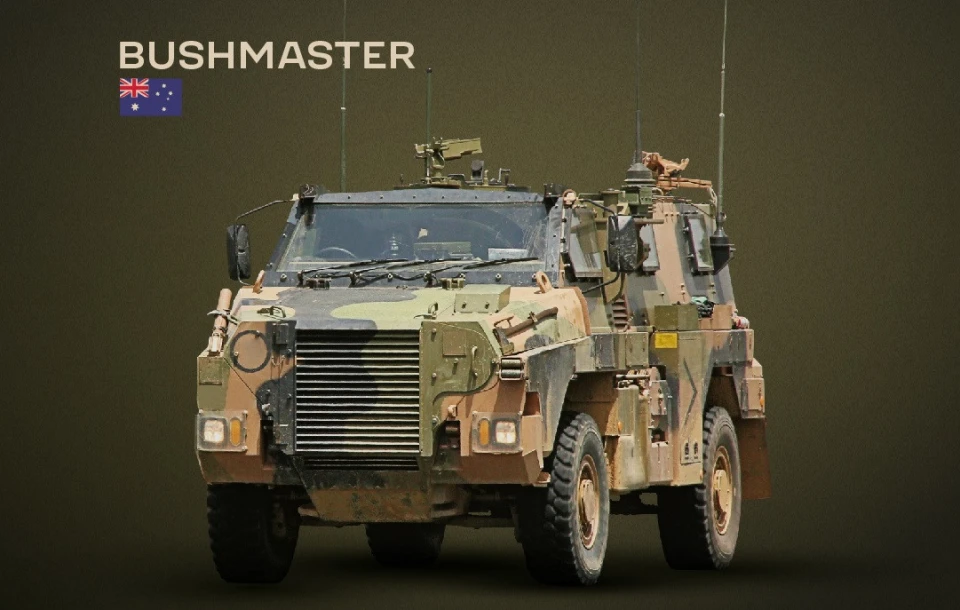
Photo: Ministry of Defense of Ukraine
In the realm of light armored personnel carriers, the American M113 and the Australian Bushmaster protected mobile vehicle have played a significant role. Over almost two years, more than 1,100 M113s have been delivered. Additionally, around 90 Bushmaster vehicles were delivered in 2022, with several more reported in 2023, potentially bringing the total to about 100 vehicles.
Fewer howitzers and self-propelled artillery systems, but new long-range missiles
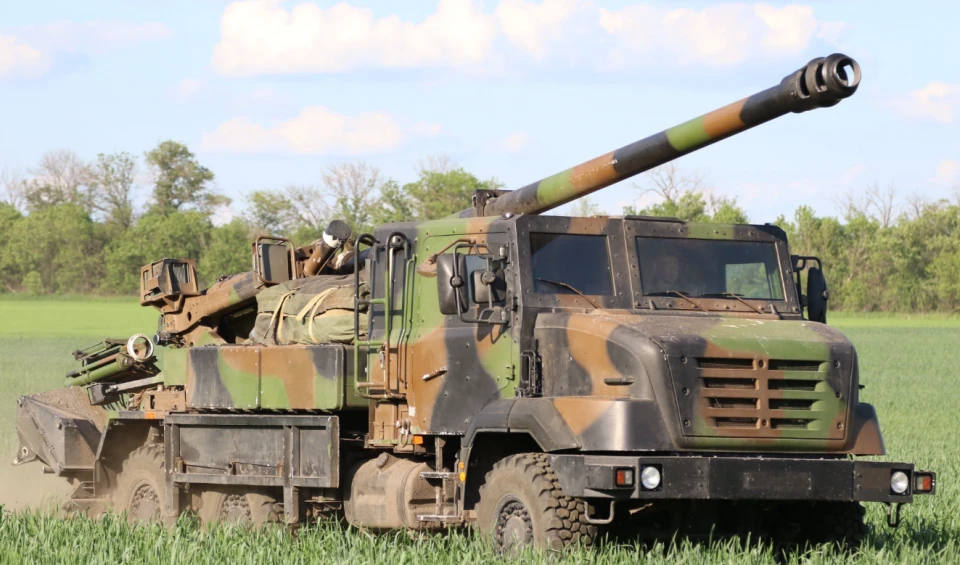
Photo: from open sources
Artillery plays a key role in wars. After all, with powerful combat power and the ability to hit the enemy at a distance of tens of kilometers, you can force the enemy to retreat (as it was in the Kherson region last year).
The influx of artillery into Ukraine started in 2022 and continued into early 2023, with deliveries of various systems such as the American M777s and L119s, British L119s, French Caesars, German PzH 2000s, Slovak Zusana 2s, Polish Krab AS-90s, among others. The summer of 2023, however, marked a slowdown in artillery deliveries. Notably, the Swedish 155-mm self-propelled artillery system Archer joined the arsenal in 2023, featuring a fully automated charging system, making it one of the world's top self-propelled artillery systems. At least eight of these vehicles were reported to be in service with the 45th Air Assault Brigade.
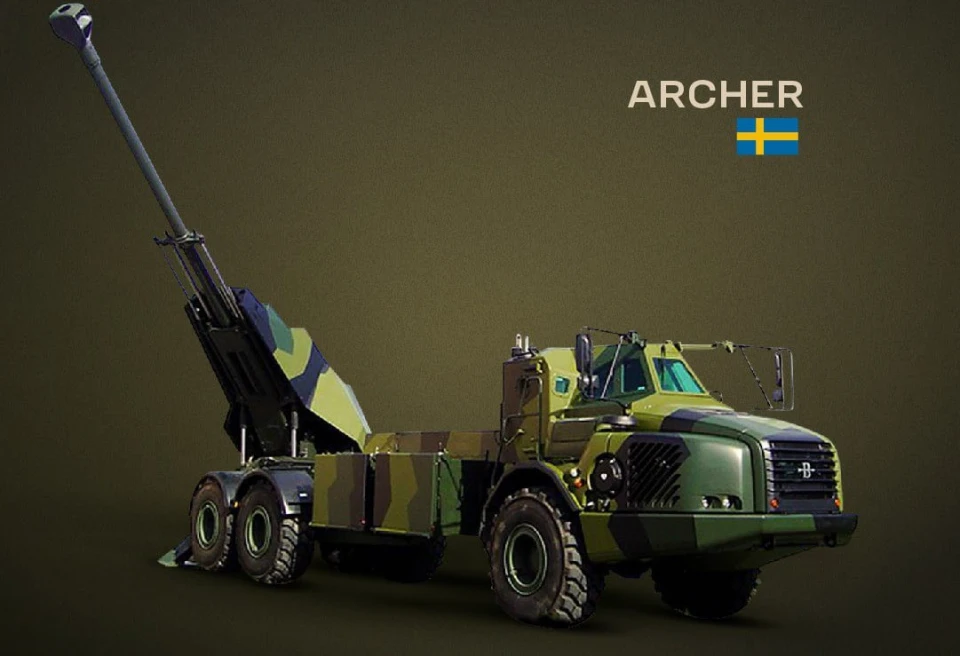
Photo: Ministry of Defense of Ukraine
In a significant development in 2023, Ukraine initiated the production of its indigenous self-propelled howitzer, the Bohdana. This artillery system is capable of firing NATO-standard 155-mm artillery shells. By the end of the year, reports indicated that the Armed Forces of Ukraine had received approximately 30 units of the Bohdan self-propelled howitzer, which are actively deployed at the front lines.
Throughout the war, Ukraine has received various MLRS, including American HIMARS (with approximately 40 units delivered over nearly two years), MRLS M270, German MARS II, and British Wolfram for Brimstone missiles.
Moreover, a significant quantity of mortars has been supplied from different sources, particularly from the United States, with 250-300 units, and Poland, contributing 100 units. Additionally, the Ukrainian domestic industry has reportedly manufactured hundreds of mortars since the beginning of the full-scale war.
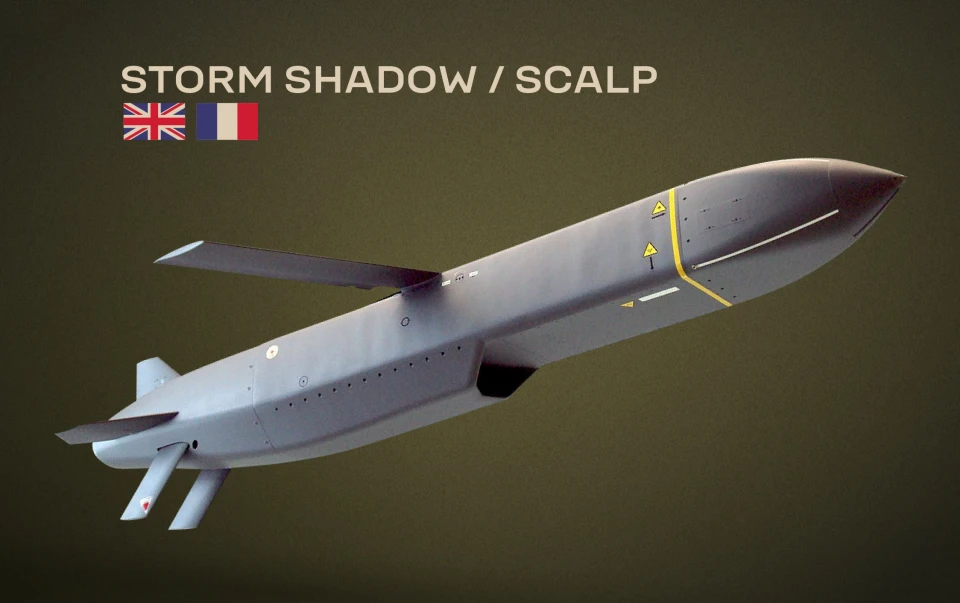
Photo: Ministry of Defense of Ukraine
In 2023, a notable development for Ukraine was the acquisition of French-British air-to-ground cruise missiles, Storm Shadow/SCALP, in addition to the existing long-range Harpoon missiles. Although the exact quantity remains undisclosed, it is estimated to be over fifty. Additionally, the Ukrainian military received ATACMS tactical missiles in the fall, with a range of 160 kilometers. However, the delivery of missiles with a 300-kilometer range has been restricted by the United States, and only 20 ATACMS missiles have been reportedly delivered. These acquisitions significantly extended the Ukrainian Armed Forces' reach, allowing them to strike targets at longer distances, including airfields and ports controlled by Russia ( explosions at Russia’s airfields and ports became more frequent).
In general, there was no significant increase in artillery and self-propelled artillery systems in 2023. Therefore, Zaluzhnyi's request for an additional 500 howitzers was probably not fulfilled. However, the decision on long-range missiles was unblocked, which changed the situation in the Black Sea.
Ammunition: over 2.6 million 155-mm artillery shells supplied, need at least as much next year

Photo: Getty Images
In 2023, the Ukrainian military faced challenges in receiving promised ammunition, particularly 155-mm artillery shells, which became essential with the transition to NATO weapons.
Despite the EU defense and foreign ministers' agreement on a procurement plan on March 20, aiming for the supply of one million shells to Ukraine by the end of the year, less than a third of this target was achieved. Approximately 300,000 shells were delivered, while North Korea reportedly supplied about 350,000 artillery shells to Russia during the same period, as disclosed by Lithuanian Foreign Minister Gabrielius Landsbergis.
Surprisingly, South Korea has emerged as the primary supplier of artillery ammunition to Ukraine throughout the year, surpassing the combined contributions of all European countries. According to The Washington Post, Ukraine received 330,000 artillery shells from South Korea since the beginning of the year.
In addition, the United Kingdom and Germany have provided tens of thousands more artillery rounds.
However, the United States stands out as the most significant contributor of artillery supplies to Ukraine. They delivered over 2 million 155-mm shells, along with an additional million rounds of various calibers.
The Pentagon says that Kyiv needs 90,000 shells a month. However, Estonia estimates that Ukraine's annual need for artillery ammunition should be 200,000 rounds per month to gain a localized fire advantage over Russia, which can produce about 2 million artillery shells annually. That is, the Ukrainian Armed Forces need about 2.4 million rounds of ammunition per year. However, this amount can deplete all European and American stockpiles in total only by 2024. Therefore, it has become important that Ukraine and its partners further increase the production of their own ammunition in 2024, which they began to produce regularly in 2022. In particular, by the end of 2023, Ukraine was to launch production of 155-mm artillery shells.
The number and quality of air defense systems is steadily increasing

Photo: Ministry of Defense of Ukraine
The supply of air defense equipment to Ukraine has been highly successful, introducing several new air defense systems that have demonstrated their effectiveness from the initial days of use. These systems have significantly strengthened Ukrainian airspace, safeguarding many civilian lives amid continuous attacks on peaceful cities by drones and missiles.
The acquired air defense systems include the American Patriot, Norwegian NASAMS, German IRIS-T, Italian-French SAMP/T, American Hawk and Avenger, British Stormer HVM 2, French Crotale, Italian Skyguard, along with various Soviet models and numerous man-portable air defense systems. The diverse range of systems highlights the substantial support Ukraine has received from its allies in enhancing its air defense capabilities.
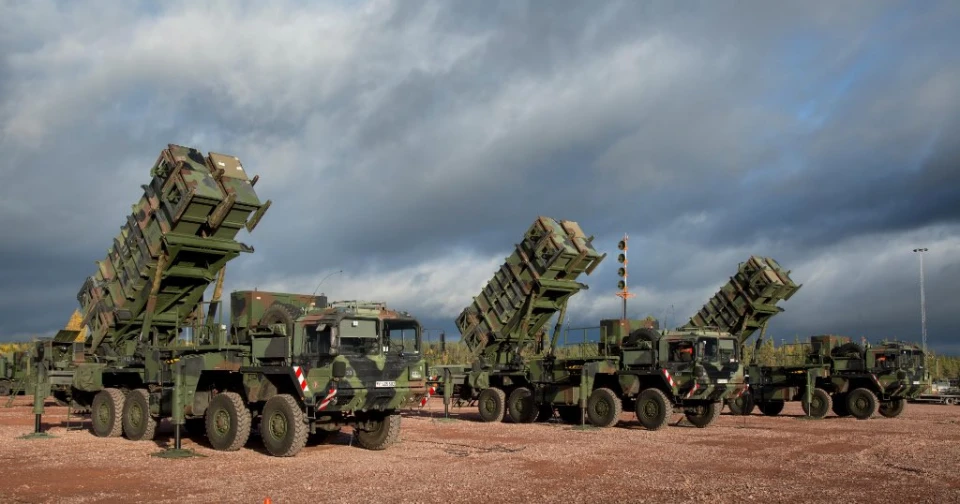
Photo: twitter.com/oleksiireznikov
The most powerful and expensive defense system (the price of one battery is $1 billion, and one missile costs $4 million) is the Patriot, which is capable of shooting down even ballistic missiles and has an interception radius of 80 km. The first battery in Ukraine's arsenal to cover Kyiv appeared in the spring, and it was with their help that the Ukrainian Armed Forces began to destroy Russian Kinzhal missiles(15 of these missiles were shot down by the end of November), which they had previously been unable to intercept.
In 2023, a collaborative effort between the United States, Germany, and the Netherlands led to the supply of a Patriot battery to Ukraine. Subsequently, Germany announced the transfer of an additional set of Patriot air defense systems by year-end, likely already operational in Ukraine. Consequently, Ukraine now boasts three of these formidable defense systems.
Regrettably, providing Ukraine with more of these systems faces constraints, as the United States, for instance, possesses only 60 batteries for the entire country, and the production of new ones is a time-consuming process.
The NASAMS system is an excellent tool for protecting critical infrastructure and military facilities. In particular, they are used in Norway to protect air bases. The first two batteries were received last fall, 6 more were ordered by the United States for Ukraine, one was ordered by Canada, and Norway also supplied several as it began to rearm its army. In 2023, at least 4 (possibly 6) new batteries have been added to the two existing ones. Therefore, the total number is approximately 6-8 systems.
The IRIS-T is a modern air defense system that can hit multiple targets simultaneously within minutes. Germany is supplying Ukraine with two versions of the IRIS-T - short- and medium-range. The first IRIS-T system arrived in Ukraine in mid-October last year. Three more systems were definitely deployed this year. But officially, the German government's website says that a total of 5 such systems have been deployed by the end of 2023. Therefore, the number of these SAMs is currently 4-5 systems.
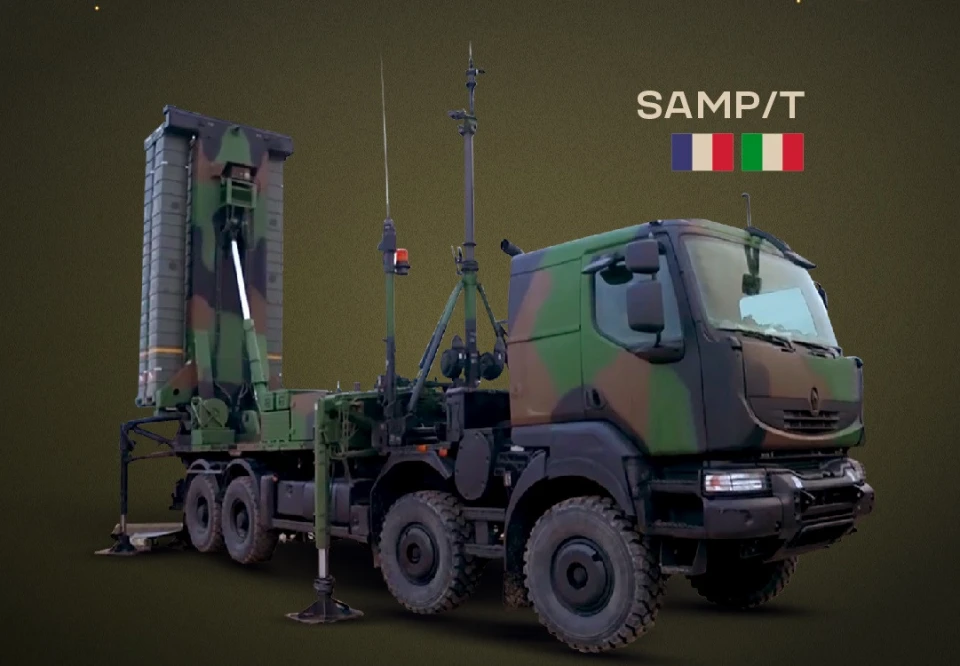
Photo: Ministry of Defense of Ukraine
Ukraine introduced its initial SAMP/T, often regarded as the European counterpart to the Patriot, in May-June. Presently, there is no available information regarding recent deliveries. Nonetheless, insights from defense-ua indicate that the probability of additional SAMP/Ts being dispatched is diminished due to the limited number of launchers and the sluggish pace at which anti-aircraft missile stocks are being replenished.
In essence, the continued availability of power in Ukrainian households during the winter serves as a testament to the effectiveness of the supplied weapons and the establishment of a multi-level air defense system. This defensive capability is anticipated to be reinforced with the introduction of the F-16.
Compared to 2022, the pace of military assistance has significantly decreased
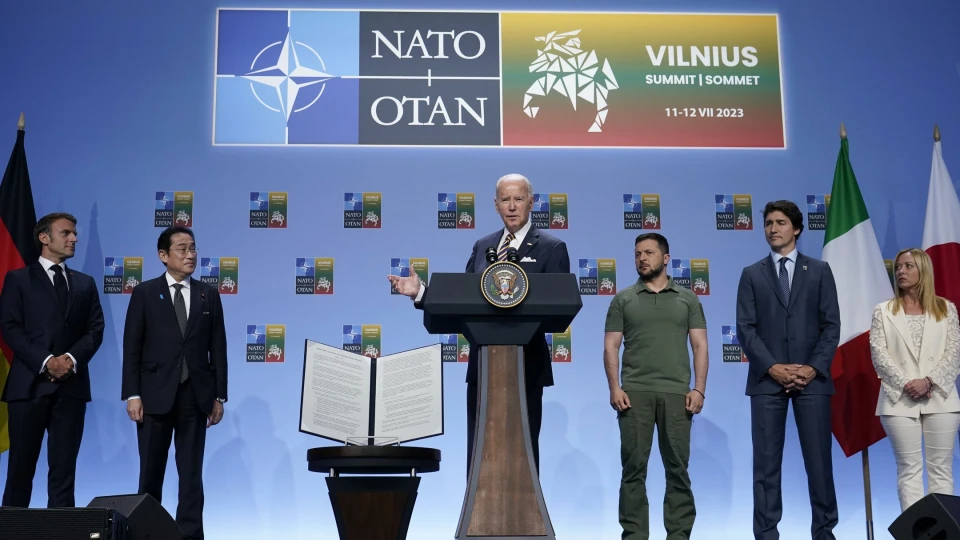
Photo: Volodymyr Zelenskyy
Until the middle of the year, the pace of military equipment supplies by the allies was high, but since the beginning of the summer counteroffensive, it has dropped significantly and in some cases stopped.
"Starting in May 2023, there has been a gradual slowdown in the pace of equipment supplies to Ukraine. Comparatively, the monthly influx of armored vehicles and artillery systems has diminished by at least half, contrasting with the previous year's average of approximately 450 armored vehicles and 75 artillery systems each month. Notably, in recent months, Ukraine has observed a cessation in new guarantees from Western allies for the provision of heavy weapons, with the exception of air defense systems and aircraft," Forbes writes.
By mid-year, Ukraine had received only half of the promised weapons. In July, the Kiel Institute for the World Economy conducted a study that showed that Ukraine's first allies - the United States, Germany, and the United Kingdom - provided Ukraine with significantly less weapons than they promised.
“In total, only a little more than half of the pledged heavy weapons have been delivered," the researchers said, noting that Eastern European countries were able to deliver more (over 80%), but also failed to fulfill their heavy weapons promises.
Interestingly, from the beginning of 2023, the rate of promises of military aid exceeding financial aid increased, and this figure increased especially before the start of the counteroffensive in April and May. However, the overall trend was downward.
"The new pledges are not as large as at the beginning of the year, and the deliveries of military equipment are much lower than the commitments," analysts say.
In its December report, the Kiel Institute writes that new aid from allies to Ukraine has fallen to its lowest level since January 2022.
"The dynamics of support to Ukraine have slowed. Newly committed aid has reached a new low between August to October 2023—an almost 90 percent drop compared to the same period in 2022. Ukraine now increasingly relies on a core group of donors such as the US, Germany, and the Nordic and Eastern European countries that continue to pledge and deliver both financial aid and important weaponry, such as F-16 fighter jets. The outlook is unclear, since the largest pending aid commitment—by the European Union—has not been finally approved, and aid by the US has been on the decline," the researchers state.
Between August and October 2023, there was a sharp decline in newly provided aid, with the value of new packages amounting to only €2.11 billion, down 87% compared to the same period in 2022 and the lowest since January 2022.
"Our figures confirm the impression of a more hesitant donor attitude in recent months. Ukraine is increasingly dependent on a few core donors that continue to deliver substantial support, like Germany, the US, or the Nordic countries. Given the uncertainty over further US aid, Ukraine can only hope for the EU to finally pass its long-announced EUR 50 billion support package. A further delay would clearly strengthen Putin's position," says Christoph Trebesch, head of the team producing the Ukraine Support Tracker and director of a research center at the Kiel Institute.
So, at the moment, further arms supplies to Ukraine face two main problems: the lack of a clear strategy to support Ukraine after the summer counteroffensive and the blocking of funding through political processes in the US and the EU (US senators have not yet agreed on the allocation of more than $60 billion in aid to Ukraine, and Hungary has blocked $50 billion in EU aid to Kyiv).
As a result, Ukraine's military command is actively formulating clear plans for military operations and objectives in 2024, considering the available opportunities from its allies. Consequently, there is a focus on the extensive construction of fortifications as a contingency plan ("Plan B") should the anticipated multibillion-dollar financial and military assistance not materialize. Concurrently, Ukrainian diplomats are engaged in efforts to persuade U.S. senators and Hungarian authorities to unlock the crucial allocation of funds essential for Ukraine's victory.
What weapons to expect next year: The F-16 and increasing production

Photo: Ministry of Defense of Ukraine
Last year, it was believed that 2023 would be a decisive year in the war, as great hopes were placed on a large-scale counteroffensive by the Ukrainian Armed Forces. However, for various reasons, the desired did not happen, and the current hopes for victory have been postponed to 2024. Undoubtedly, Ukraine will need weapons, lots of them.
Viktor Yahun, a military expert and retired Major General of the Security Service of Ukraine, emphasized to Espreso that shortages of weapons are inevitable during warfare, regardless of the quantity supplied. However, he stressed the importance of acknowledging the existing realities concerning the available and potentially forthcoming weaponry.
"For example, the United States has 6,000 Abrams tanks. If they wanted, they could give the Ukrainian Armed Forces 1,000 of these tanks. But they will not give them to us because they have their own plans. They are keeping them all for something, although I cannot say what. Also, back in 2022, there was a possibility that we could be given a lot of A-10 Thunderbolt IIs, the so-called "warthogs" - single-seat attack aircraft. We would have really needed them, first of all, as an offensive weapon. But we did not see them. Why? Because they refused to provide them.
In general, there are a lot of weapons that we would like to have, but they are simply not physically available, or they are running out, or our partners have them in such a state that they have to be repaired. This was the case with some of the tanks that were provided to us for the counteroffensive. But to provide us with weapons, there are many political approvals and agreements. It is good that at least something has been given and is being given, but it is clear that this is not enough. Our Commander-in-Chief has repeatedly voiced what we need for the war," says Viktor Yahun.
Certainly, Ukraine eagerly anticipates the arrival of F-16 fighter jets, a request that has been persistent since the outset of the full-scale war. The Ministry of Defense of Ukraine has underscored the priority of F-16s among all the military equipment provided by allies in its Weapons of Victory calendar. This strategic focus is well-founded, as the incorporation of these aircraft, coupled with an augmentation of air defense systems, holds the potential to enable Ukraine to open one or more civilian airports for the first time since the onset of the conflict. This mirrors the situation in Israel, where robust weapons systems, despite constant threats, ensure the operational continuity of airports.
The establishment of a "fighter jet coalition" was formally announced at the end of May 2023, with several countries, including the United States, participating. It's crucial to note that providing the aircraft is just the initial step; there is a need to train Ukrainian pilots and engineers responsible for aircraft maintenance. By early 2024, six months after the agreement for the transfer of F-16s was reached, these fighters are expected to be actively safeguarding Ukrainian skies.
Over the 45 years since the inception of F-16 production, more than 4,500 units have been manufactured. Ukraine has entered into an agreement to acquire over 70 F-16 aircraft, equivalent to four squadrons, slated for deployment in 2024. A substantial portion of these aircraft is being supplied by The Netherlands, Belgium, and Denmark. However, it's important to recognize that these countries are not merely providing the aircraft; in exchange, they are set to receive modern F-35s as part of the reciprocal arrangement.
"When we want weapons, the vast majority of them are military rotation. We are given older equipment, and in its place, the US buys or supplys them with newer equipment. For example, the Croats gave us their Soviet helicopters and received new ones in return. Similarly, when we were given Soviet armored personnel carriers and new ones were provided in return. In most cases, to get weapons, we need to think through a military rollover, who gets what in return, when we get ours," Viktor Yahun said.
Therefore, the military expert emphasizes the importance of signing long-term contracts with arms manufacturers to get new equipment.
"It is also important to produce more of our domestic modern weapons. For example, our Oplot tank, only 7 units were produced, and since 2014 - not a single one, although it is among the top 15 best tanks in the world and is on par with the new Leopards. It just needed to be manufactured and filled with content. The Russians could order French sights and navigation for their tanks, which we could not. Our iron and foreign technical devices could bring Oplot to life again. It would be cheaper and better for us. We have to open a plant with the Germans, but the question of what our armored plants will do is still unclear," says military expert Viktor Yahun.

Photo: Ministry of Defense of Ukraine
It's no secret that in 2024 Ukraine will place great emphasis on its own weapons production. After all, the second half of 2023 showed that it is impossible to rely solely on the help of allies, because the longer the war lasts, the more "Ukraine fatigue" grows in the world, so we have to constantly remind that Ukrainians are stopping Putin's invading army on their own land so that other countries do not have to fight.
The 16th meeting in the Ramstein format particularly emphasized this paradigm shift in terms of domestic arms production. On October 11, President Volodymyr Zelenskyy, speaking at a military meeting, announced an initiative to form a defense industry development coalition within the framework of the existing coalition of capabilities. And during his December visit to the United States, he and his team had a series of meetings with defense companies in America and around the world, where Zelenskyy again emphasized the importance of cooperation and joint production. Therefore, next year could definitely be a year of increasing Ukraine's own weapons production. During his press conference, Zelenskyy already outlined one important goal: to produce at least 1 million drones in Ukraine in 2024.
"Today, hundreds of companies are already involved in key production, and I am grateful to every company that provides the desired result for our soldiers. 2024 should be a time of significant growth in domestic defense production. We are securing contracts and the budget. Special attention is paid to the production of all types of drones, including FPVs and ammunition. Ukraine must be able to meet all the necessary needs for drones," the President of Ukraine wrote after the December 26 meeting of the National Security Council.
According to the EP, localization of military production not only makes Ukraine more independent in terms of armaments but also stimulates the economy. Domestic companies and their contractors pay taxes, so part of the state's money goes back to the budget, which finances defense. This allows us to buy more weapons, improve them, and continue the fight.
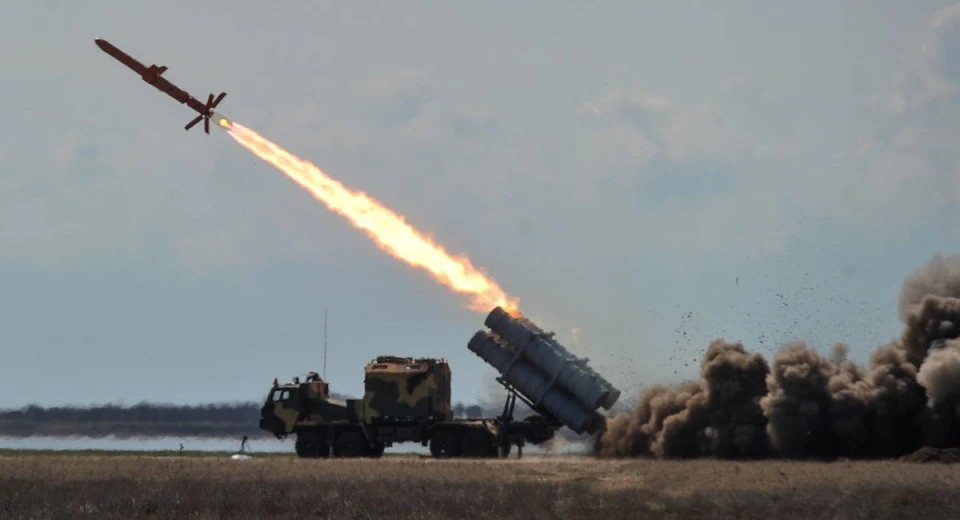
Photo: defence-ua.com
Long-range missiles are also an important issue to be resolved in 2024. Their number is still insignificant, and it is not certain that the allies will change their decision next year. In particular, Ukrainians have been talking about powerful long-range German Taurus missiles since spring and summer, but the Scholz government has not agreed to provide them. Therefore, the production of its own long-range missiles and drones is also a matter of priority for next year.
"There is no doubt that in 2024 Ukraine will continue to develop and produce its long-range weapons. Because so far they are not giving it to us. An interesting story happened with Israel regarding long-range missiles. They used them to strike an Iranian reactor to prevent the development of their nuclear program. Then it turned out that the Israelis used American missiles. The United States had many complaints about Israel, but they said the following phrase: you can have complaints, but if you need to defend your homeland and destroy the enemy, then we would rather be under sanctions and condemnation than not use weapons at the appropriate time. Ukraine is deprived of this opportunity. We will not be allowed to use Western long-range weapons on Russian territory, so we are going our own way. We are preparing our capabilities, including long-range drones. I think this issue will be resolved exclusively by our forces," emphasizes Major General Viktor Yahun.
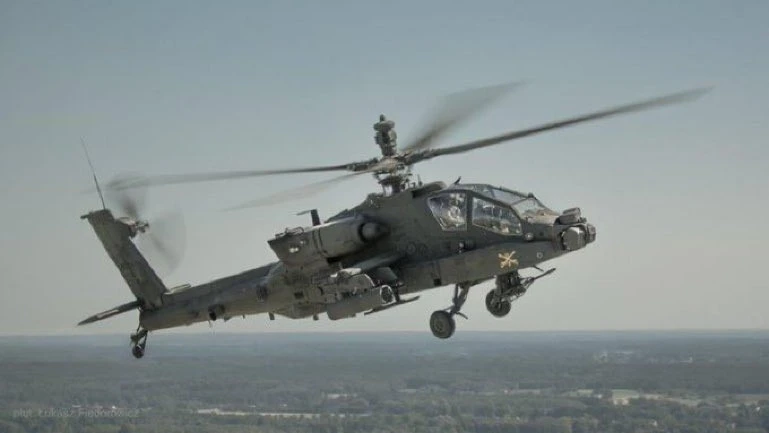
Photo: Mariusz Blaszczak
In December, Reuters wrote an exclusive story that during President Zelenskyy's visit to the United States, the Americans were given a new list of wishes from the Ukrainian Armed Forces for the next year. In addition to the usual tanks, howitzers, and long-range missiles, the list contained several surprises: C-17 and C-130 Super Hercules transport aircraft, Apache attack helicopters, and Black Hawk helicopters, as well as F-18 fighters and MQ-9B Sky Guardian drones, and the expensive THAAD air defense system. Is it realistic to get all this? At the war's outset, allies were reluctant to even consider supplying tanks and aircraft, but now it's a reality. Therefore, the important factor is not the type of weapon itself, but the political processes within the United States ahead of the November 2024 presidential election. After all, the decision is made by politicians.
In October of this year, former British Prime Minister Boris Johnson said an interesting phrase about what exactly the allies will not give Ukraine from their weapons in 2024:
"Until Ukraine becomes a NATO member, the West will not offer a nuclear umbrella. This is obvious. But this time must come, and it is right. In the meantime, we have to provide all technological solutions: drones, intelligence," the British politician said on the United News national telethon, hinting that the Ukrainian Armed Forces can expect, in fact, any weapon except nuclear, but this will take time and the political will of the partners.
So, to summarize, in 2024, Ukraine is preparing for several possible scenarios, which will largely depend on the allies' approval of military assistance to Kyiv. The US and EU may allocate more than $110 billion in January, which will allow the Ukrainian Armed Forces to move forward, especially with the support of F-16s. If the aid is delayed and the supply of weapons slows down even further, Ukraine will have to fight a defensive war. Therefore, Kyiv is increasing its own production and building new lines of fortifications to be more independent of political conflicts in allied capitals.
- News














































